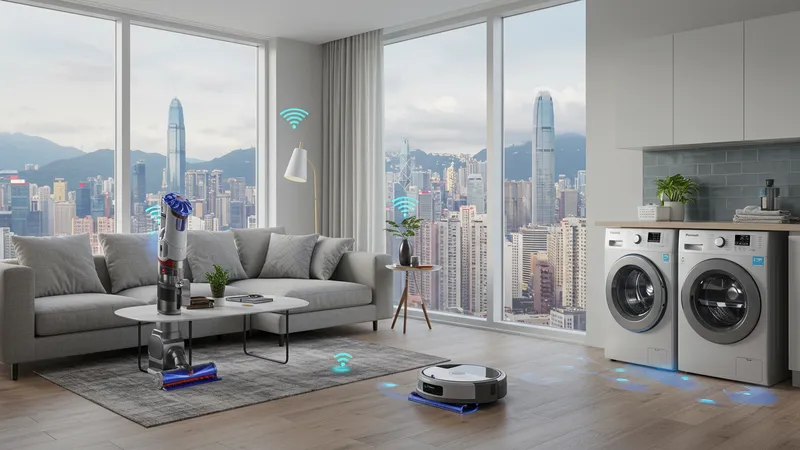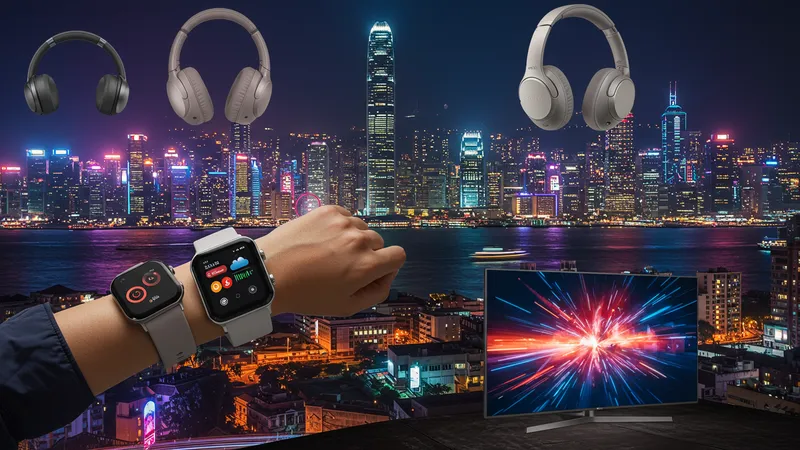

The world of consumer electronics is evolving at an astonishing pace, especially in dynamic markets where technology, lifestyle, and urban culture intersect. In places like Hong Kong, what once felt futuristic is now fast becoming reality. From smart living innovations to ultra-connected personal gadgets, the latest developments in consumer electronics are not only reshaping everyday routines but also reflecting shifting consumer values and preferences. This is more than just a push for newer products—it's about how evolving technology is weaving seamlessly into different aspects of life.
Recent trends reveal how brands and consumers in Hong Kong prioritize interconnectivity, energy efficiency, and personalization. Innovations span from cutting-edge wearables and AI-driven home platforms to immersive entertainment solutions with high-speed connectivity. These shifts extend beyond mere upgrades, representing a bold move toward smarter, more sustainable, and interactive living experiences.

The rise of the Apple iPhone 15 Pro highlights the ongoing demand for flagship smartphones that effortlessly intertwine communication, entertainment, and powerful photography. In contrast, foldable models like the Samsung Galaxy Z Fold5 illustrate a leap forward in form factor flexibility, appealing to users seeking multi-device convenience in a single package.
Hong Kong’s compact urban lifestyles drive a preference towards multifunctional gadgets—Dyson’s V12 Detect Slim and Ecovacs Deebot T20 Omni are prime examples. These devices integrate intelligent sensors and wireless connectivity for optimized home caretaking. At the same time, entertainment and productivity merge—witnessed by the Nintendo Switch OLED and LG’s OLED TV, which ensure high-quality experiences whether on the move or at home.
Wearables and smart home innovations remain at the heart of this transformation. Google Pixel Watch 2 and Panasonic’s Wi-Fi connected washer dryer are redefining how users plan routines, monitor health, and manage household chores, all from their mobile phones. This focus on integration reduces friction and encourages a new standard for efficiency and comfort in Hong Kong’s tech-savvy households.
The pricing range for these devices reflects a spectrum of accessibility, from sub-HKD $1,000 for smart kitchen gadgets to close to HKD $24,000 for premium home entertainment systems. Such diversity ensures that whether consumers prioritize budget, innovation, or connectivity, the latest trends in Hong Kong’s electronics market have something for everyone. The deeper details reveal even more valuable insights ahead…
Smartphones are consistently at the center of Hong Kong’s consumer electronics trends, blending next-generation features with enhanced usability. The Apple iPhone 15 Pro pushes the envelope with its industry-leading processor and camera underpinnings, matching the city’s fast-paced lifestyle. Similarly, Samsung’s Galaxy Z Fold5 introduces a novel take on multitasking—a phone that doubles as a tablet for users who juggle work and entertainment in tight urban environments.

There is a growing consumer appetite for displays that are sharp, vibrant, and easy to use on the go. Both foldable and flagship models feature screens that make streaming, gaming, or viewing content seamless—important for Hong Kong residents who value both productivity and leisure during commutes or downtime.
Hong Kong’s unique retail landscape supports rapid adoption of the latest phones, with quick rollouts and frequent in-store demos across the city’s electronics megastores. This hands-on approach speeds up decision-making and fuels the early adoption trend observed among tech-forward residents eager to try new experiences first.
Moreover, integration with the broader smart device network is no longer optional but expected. The latest smartphones act as hubs for wearables and smart home appliances, allowing residents to manage appointments, monitor their health, and even control home devices remotely, all within Hong Kong’s hyper-connected environment.
Smart home technology has rapidly gained importance in Hong Kong, where space efficiency and convenience drive innovation. Products such as the Dyson V12 Detect Slim and Ecovacs Deebot T20 Omni are designed specifically for busy, compact living spaces. Their ability to automate cleaning tasks has struck a chord with urban dwellers who value time-saving and minimalism.

Connectivity is central—many devices now offer Wi-Fi or Bluetooth control and app-based scheduling. Panasonic’s NA-V11FX2 Washer Dryer allows users to monitor laundry cycles remotely, contributing to the seamless “always-connected” lifestyle favored by modern consumers in Hong Kong’s vertical cities.
Air quality and kitchen gadgets like the Xiaomi Mi Smart Air Fryer further showcase the shift toward healthier, tech-powered routines. Their app integration simplifies meal planning and enhances energy efficiency—key priorities for those seeking smarter urban living.
Manufacturers are also investing in features tailored for local preferences, such as Cantonese-language voice assistants and region-specific cloud integrations. This level of personalization signals a deeper understanding of Hong Kong households’ unique needs, ensuring that smart devices remain both practical and culturally relevant.
Wearables have evolved from simple fitness trackers into multifaceted devices central to daily routines. The Google Pixel Watch 2 embodies this trend, offering continuous health monitoring, real-time notifications, and effortless pairing with Android smartphones, transforming how users in Hong Kong manage their work-life balance.

Audio and visual entertainment gadgets—such as the Sony WH-1000XM5 headphones and LG OLED65C3PSA TV—push boundaries for immersive experiences. Whether streaming high-definition movies or enjoying music on the go, consumers benefit from innovations in sound clarity, wireless capabilities, and AI-powered picture adjustment.
Hong Kong’s preference for portable, adaptable entertainment solutions is also reflected in the ongoing popularity of the Nintendo Switch OLED Model. Its hybrid format lets residents maximize gaming enjoyment in limited spaces and during commutes—demonstrating how device flexibility matches the urban lifestyle.
Manufacturers are linking wearables and entertainment technologies, with headphones that pair easily across multiple gadgets, and smart TVs that connect with voice assistants and other home devices. This web of interconnectivity fuels a seamless, unified entertainment environment tailored to the expectations of tech enthusiasts in Hong Kong.
Hong Kong’s electronics market is shaped by consumer demand for innovation, reliability, and integration. Price-conscious yet quality-driven buyers closely compare features and compatibility before making selections. Retailers and online platforms consistently update their offerings to accommodate the surge in interest for interconnected products.

Brands are emphasizing eco-friendly technology, rolling out appliances with energy-saving modes, durable materials, and recyclable packaging. This resonates with Hong Kong’s environmentally aware community, which seeks sustainability alongside high performance in consumer electronics.
The future of consumer electronics in Hong Kong looks poised for even greater advancements. Local tech shows display prototypes of AI-powered gadgets, while retailers highlight extended after-sales support and frequent software updates as value drivers. This cyclical renewal keeps Hong Kong at the leading edge of global tech adoption.
Ultimately, the synergy of cutting-edge devices—from smartphones and wearables to smart appliances—creates a technology ecosystem tailored to the unique contours of urban life in Hong Kong. With innovation as the constant thread, the future of consumer electronics in the region promises more integration, convenience, and personalization than ever before.